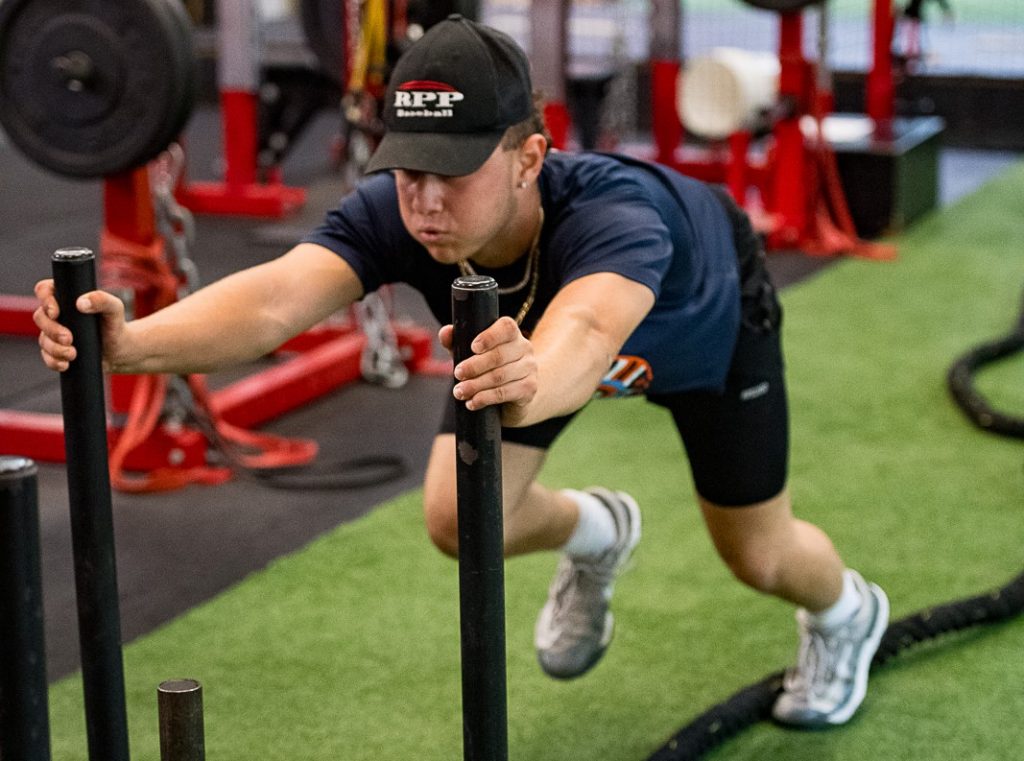
It’s no great secret by now that playing baseball year-round is not such a great idea, mentally (burn out) or physically (velo drops / injury). When we first started training baseball players around 10 years ago, just about everyone who played ball began their training in January. Athletes would show up desperately trying to get their velo up…. IN JUST 8 WEEKS! Back then trying to convince high school athletes to begin lifting weights in November was like pulling a cow through a keyhole. A few pitching coaches we worked with didn’t even believe in strength training for baseball players at all. Times have changed. Nowadays, more and more athletes begin their training right after “fall ball”, in November.
So, here we are, ready to rock the boat once again.
The bottom line is, if you truly want to make a big difference in your performance next spring, as in, throw harder or increase your bat speed, you need to begin your training NOW, in the fall. The difference is quite significant.
If you’re an older high school athlete without a college commitment you probably want to play, but here’s the capper.
YOU CAN ABSOLUTELY DO BOTH, PLAY AND TRAIN!
Any baseball performance facility worth their keep should be able to balance your volume and intensity during the fall with ease.
Should You be Playing Fall Ball?
The first question you should be asking, however, is whether you should be playing ball in the fall? Ask yourself these three questions:
-
- Are you playing another sport?
- Have you thrown more than 100 innings this Spring and Summer combined?
- Are your metrics ready for success and to impress during the fall season?
If you find yourself in any or all of the above 3 categories, my feeling is you should NOT play fall ball and get in the gym. With that being said, let’s talk about why.
Training in the Fall / Setting Up the Foundation
Many young athletes opt to play fall ball and skip training during this crucial period when we can focus specifically on gaining size as well as stability. Unfortunately, these athletes are often underweight and weaker, exactly the one who would benefit from training in the fall the most. The good news is if an athlete really needs or wants to play in the fall, both training and playing can be done at the same time, but periodization is key.
Increases in strength and power require stability, which comes about via two broad adaptations:
-
- Adding lean muscle mass
- Building tensile (tendon) strength in low positions
To get the most out of the off-season, a training program should begin with Tissue Prep and end with a Conjugate Cycle.
What do they mean?
Tissue Prep – Using moderate resistances with slow eccentric movements and holds in the bottom position help to improve muscle fiber size, change in fiber structure and “re-groove” the architecture while preparing the ligaments and tissue for the heavier work ahead.
This phase is basically about putting on size and creating better stability within the tendons and joints. I’ve found that athletes who skip a tissue prep phase in the early off-season do not achieve the same results. In addition, and even more important, these athletes may have a higher risk of injury both in the weight room and later in the off-season when throwing starts due to less-than-optimal time spent on stability.
Conjugate – In strength training, “Conjugate” means bringing it all together. So, conjugate training is literally bringing together different training styles, in this case strength, power and speed into one cycle. This is ideally placed at the end of the off-season to pull together all of the athletic qualities we have been training in preparation for games and competition.
Below is summary of a 6-month program that begins in September. As you can see it provides plenty of time to not only prepare the body with Tissue Prep for what’s coming later in the program, it also includes a conjugate cycle on the back end.

Now let’s take a look at what it means to begin later in November. We not only miss the crucial tissue prep phase but there is no time after training strength and power to pull it all together in a conjugate phase.

If we try to slice it another way with a November start by including a tissue prep phase in November, this removes an entire month of extra strength work as well as that same ever important month of conjugate training to help pull it all together. Anyone who has trained with us knows how much can be accomplished with another 8 weeks of these 2 adaptational periods.
The bottom line is, without training in September and October, there simply is not enough time to train the multiple qualities needed to create a more well-rounded and prepared athlete.
Summary
So, to review, athletic training to improve performance is a year-round process. Starting in September accomplishes a few things:
-
- It re-introduces and solidifies good movement quality after a long season
- It focuses on stability and muscle mass earlier, better preparing the body for heavier volumes of lifting come November
- It provides an extra 8 weeks of muscle building focusing on stability and gaining lean muscle mass/weight
- It can be implemented during “Fall Ball” when the slight residual soreness from training will not interfere with many athletes who need to playing limited innings
Once again, I’ve said it, starting earlier yields better results in the spring. Get a jump on the competition. Hope to see everyone in the fall.
See ya’ in the gym…
By Nunzio Signore (Owner at RPP Baseball)
You live too far to train with us in-house at RPP? You can now train with us on a REMOTE basis.


